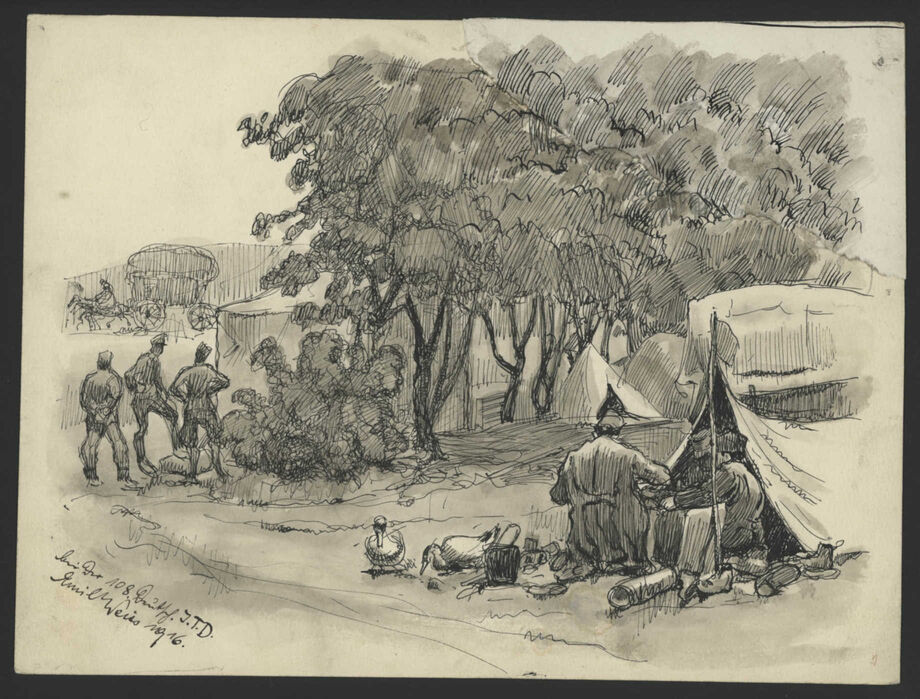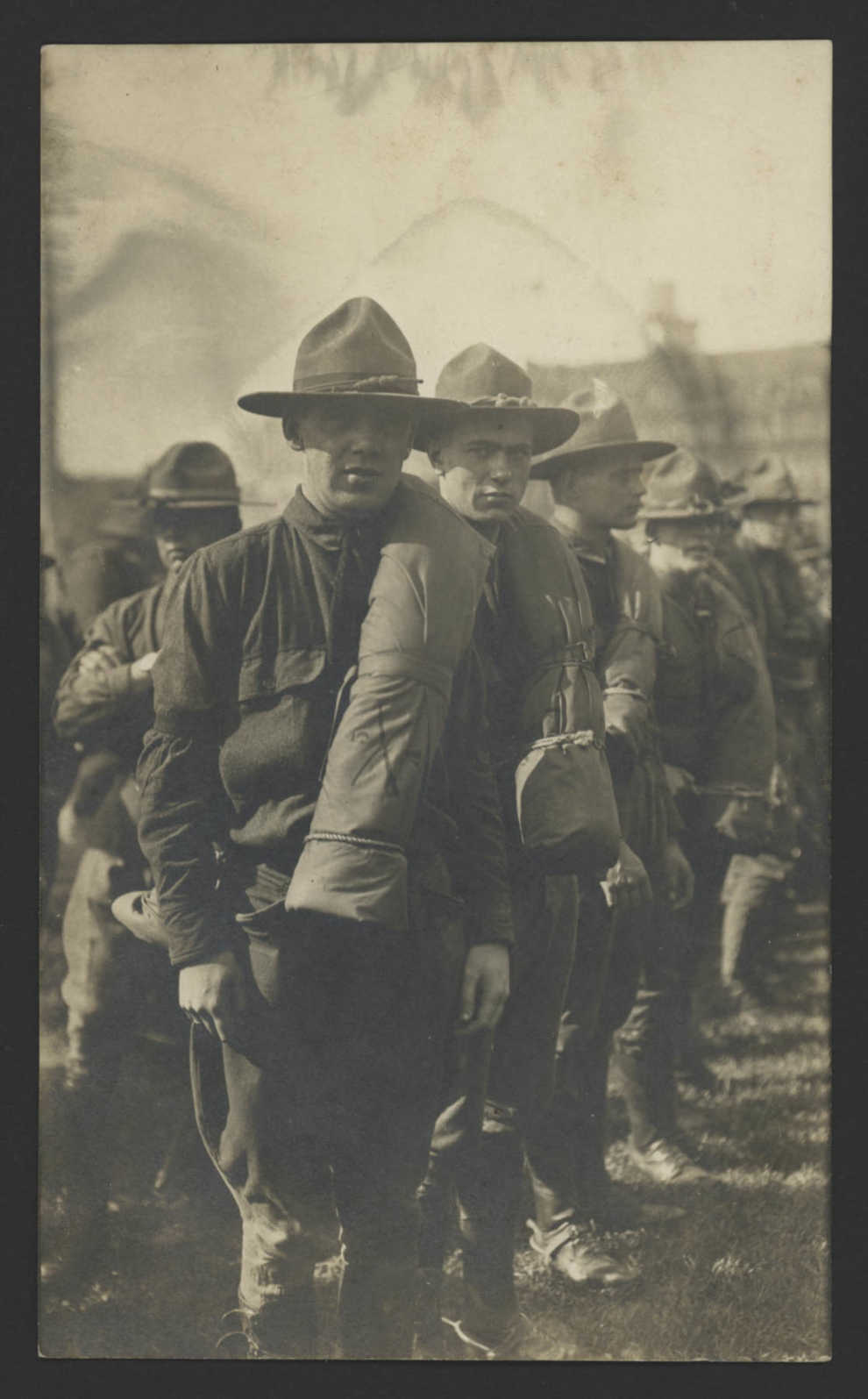
A sketch by Emil Weiss, who was one the official Austro-Hungarian war artists who documented the war through art and emigrated to the US in 1948. His grandson brought a collection of sketches, posters and drawings from his war time service. Photo courtesy of Connecticut State Library.
With the help of an NEH grant, the Connecticut State Library has documented more than 450 men’s and women’s experiences in World War I. Over the course of four years, the Remembering World War One project collected nearly 5,000 images and artifacts illustrating these individuals’ stories. This extensive and deeply personal collection was amassed through 47 public digitization events hosted by partner institutions throughout the state. Remembering World War One stands out as an exceptionally comprehensive state-wide commemoration of the war’s centennial; it garnered two nationally-syndicated AP stories and numerous local television and radio spots.
